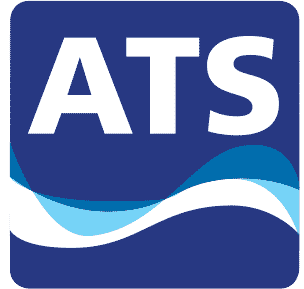
It’s simple: enclosed safety showers keep your employees safe. Imagine this: a worker at your job site makes a mistake and spills a hazardous chemical on his abdomen. His co-workers help him strip off his clothes covered with the dangerous substance. Then they get him under the water stream for the required 15 minutes. The problem is that he’s naked, covered in water, in an open safety shower, and the windchill is -15.
If you don’t have enclosed safety showers, your life-saving equipment may cause secondary injuries. Standing under a steady water stream for 15 minutes will wash away dangerous chemicals. But if your employee is out in the open, in cold weather, the water plus frigid temperatures equals cold-weather injuries. If you have a job site in a cold climate, heated, enclosed safety showers protect your employees and business.
Hypothermia happens without enclosed safety showers
After a chemical injury, ANSI regulations state a person needs to stand under water running at 20 gallons per minute for 15 minutes. Or in the case of an eye injury, under an eyewash flowing at 3 gallons per minute for 15 minutes. Also, the water temperature must be between 60 and 100 degrees Fahrenheit. Those regulations keep an injured employee safe. But if the outside temperature is well below freezing, warm water isn’t going to make a difference in an open, unheated cubicle.
After standing under that steady stream in freezing temperatures for 15 minutes, your worker is at risk for hypothermia. And it doesn’t matter if his clothes are on or off. Because when you’re wet, your body loses heat 25 times faster than when you’re dry. All you have to do is get your body temperature 95 degrees or lower, and hypothermia sets in.
What hypothermia looks like
- Shivering in mild hypothermia; shivering stops as condition worsens
- Dizziness
- Hunger or nausea in mild cases
- Faster breathing and heart rate in mild cases, weak pulse and shallow breathing in moderate to severe cases
- Confusion
- Slurred speech or trouble talking
- Lack of coordination
So if you suspect someone has hypothermia, get medical help immediately. But until first responders arrive, help the person remove any wet clothes, and go into a warm place. If you have blankets, cover him. Warm, non-alcoholic and caffeine-free drinks will help warm the person’s body. Also, never rub or massage a person with hypothermia—it could cause cardiac arrest.
Slips and falls happen without enclosed safety showers
If your work sites are in a cold climate, you know how fast water turns to ice. But calculating exactly how long it takes water from an outdoor shower to turn into a skating rink is a complicated question. The easy answer is that water sprayed onto a cold surface will be slick.
After an outdoor, open safety shower sprays its 20 gallons per minute for 15 minutes, you’ll end up with at least 300 gallons of water on the ground. That’s 300 gallons ready to freeze, ready to cause slip-and-fall injuries. Or in the case of an eyewash, 3 gallons per minute for 15 minutes, or 45 gallons ready to become an ice rink. A worker with a chemical burn doesn’t need a broken bone to match.
Better safety
Our team of safety experts designed the Shieldsafe heated cubicle safety showers with your employees in mind. Enclosed safety showers—with heat—are the best way you can keep an injured employee safe during treatment. We’ve got the Fortress, a best-in-class shower that provides a weather-free space for injured workers and first responders. It’s so big that there’s also room for other required safety equipment, including a defibrillator and bandages. Also, we make many of our showers with stainless-steel parts so they’ll pass the test of time and weather.
The last thing your injured employee needs is a cold-weather injury like hypothermia or a fall on ice. And the last thing your company needs is a lawsuit over a safety shower or eyewash injury. So if you want to keep your employees safe, and protect your company from liability, you need heated enclosed safety showers. Call us today to learn more about our customizable, state-of-the-art equipment!


